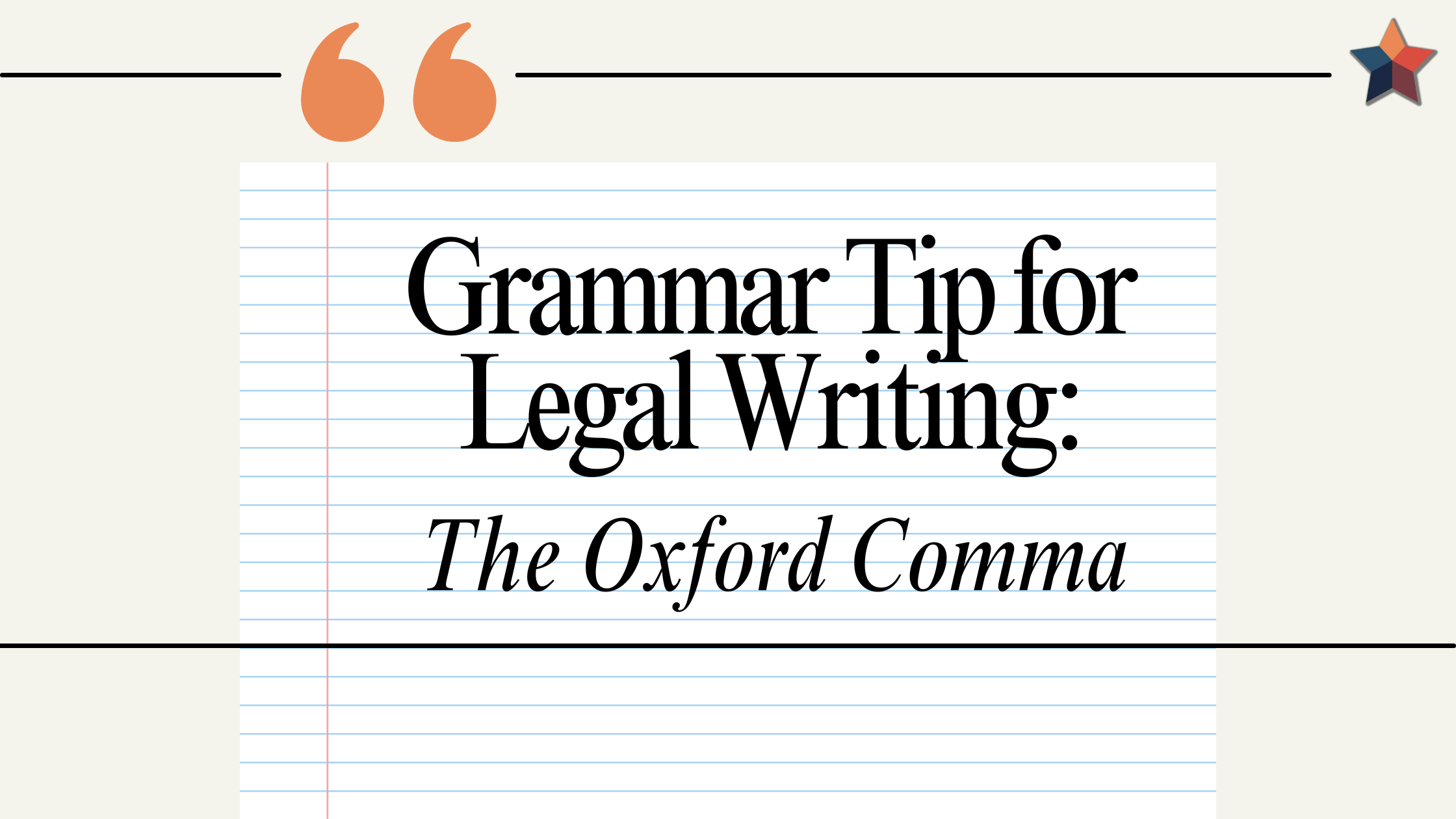Why is the Oxford Comma So Controversial?
Published on May 12, 2025 From The Editors

Although it may seem surprising to some, a simple punctuation mark—the Oxford comma—has been the subject of much (sometimes passionate) debate over the years. Also known as the serial comma, the Oxford comma is the one that precedes the conjunction in a series of three or more items.
In the following sentence, it is the comma after “notice”:
The attorney provided copies of the application, notice, and order.
The Oxford comma sparks debate because it is considered optional. The sample sentence would still be grammatically correct without the comma after “notice.”
Some people are taught at an early age to always use an Oxford comma, believing it leads to clearer and more balanced sentences. Others are taught that it is irrelevant and that including it only wastes time. Life-long adoption or avoidance of the Oxford comma then leads some to lobby heatedly for its use and others for its omission.
What Style Guides Say About the Oxford Comma
Compounding the problem, style guides offer different opinions on the Oxford comma. Most, including The Chicago Manual of Style, strongly recommend its use, since it prevents ambiguity. The Associated Press Stylebook, meanwhile, suggests avoiding Oxford commas—except in instances where including the comma prevents confusion.
The Oxford Comma is a Cure for Ambiguity
So how does a missing Oxford comma cause ambiguity? Consider the following sentence:
The defendant was ordered to pay damages, attorney’s fees and costs and child-care expenses.
In that example, the phrase “attorney’s fees and costs” represents one combined element. With no Oxford comma after “costs,” there could be some confusion as to whether the defendant was ordered to pay his own child-care expenses or the attorney’s child-care expenses.
Here’s another example:
The attorney spoke to her clients, the witness and the medical professional.
Are the witness and the medical professional the attorney’s clients? Or did she speak to three distinct entities—her clients, the witness, and the medical professional? Without an Oxford comma, it’s hard to tell.
The Oxford Comma in Legal Writing
Bryan A. Garner, author of numerous influential books on legal writing, has long encouraged use of the Oxford comma. In fact, in his second edition of The Elements of Legal Style, his first punctuation rule is “Always use the serial comma.”[1]
And in legal writing, the ambiguity that can be caused by a missing Oxford comma can have serious consequences. In 2017, in O’Connor v. Oakhurst Dairy, 851 F.3d 69, a court concluded that the lack of an Oxford comma in a state law could entitle truck drivers to overtime pay that they had been denied for years—a case that ultimately settled for approximately $5 million. A story in The New York Times about the case noted that “legal history is replete with cases in which a comma made all the difference.”[2]
Of course, it’s worth noting that there are rare occasions where including an Oxford comma can lead to ambiguities, too. For example:
The attorney was grateful for the help of her paralegal, Mary Smith, and Bob Jones.
In the sentence above, is Mary Smith the name of her paralegal, or is the paralegal a separate, unnamed assistant?
Following the guidance of The Chicago Manual of Style, editors at Texas Bar Books include Oxford commas in State Bar books and manuals. Should you do so, as well? That’s a matter of personal preference. However, it is imperative that legal writers always review their sentences carefully and ensure that their meaning isn’t obscured by misplaced or missing punctuation. And omitting the Oxford comma is arguably riskier than including it.
[1] Bryan A. Garner, The Elements of Legal Style, 2nd ed. (Oxford University Press, 2002), 15.
[2] Daniel Victor, “Lack of Oxford Comma Could Cost Maine Company Millions in Overtime Dispute,” New York Times, March 16, 2017.

Courtney Cavaliere
Courtney Cavaliere has been an editor at Texas Bar Books since 2010 and has an MA in Journalism from the University of Texas. She enjoys creating mosaics and stained glass panels in her spare time and is a member of the Austin Mosaic Guild.